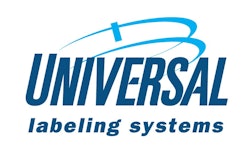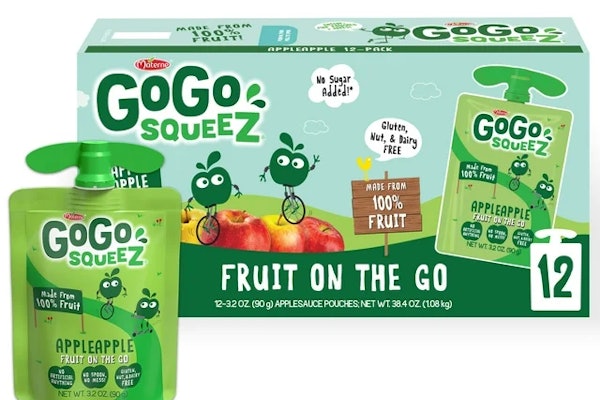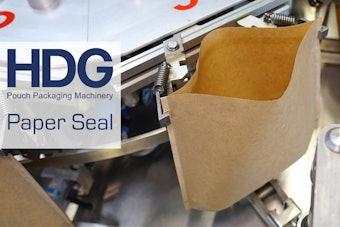
How can a regional contract packager win the business of a megabrand consumer packaged goods company? Procter & Gamble says it selected Multi-Color Corp., Cincinnati, and its Quick Pak contract packaging services division to produce decorated caps for a new variety of Tide liquid laundry detergent because they demonstrated the ability to combine packaging materials and technologies to help P&G achieve a marketing objective. Multi-Color Corp. and Quick Pak seamlessly blended shrink-sleeve labeling and cap-decorating capabilities in designing and producing distinctive cross-promotional caps for Tide with Febreze Freshness. This occurred after P&G had determined that contract packaging offered the best way to bring the components together, says Michael Fox, a P&G packaging engineer who worked on the project.
“We decided that it would be faster and cheaper to have Quick Pak do whatever was necessary to do the shrink-sleeve labels than for P&G to ramp up its own production,” Fox says.
The result was that Multi-Color and Quick Pak produced the decorated caps within P&G’s tight time requirements and expanded the marketing “billboard” of the traditional laundry detergent bottle to the cap, giving Tide with Febreze Freshness packages distinction.
The following four factors helped Multi-Color and Quick Pak gain P&G’s business and then deliver a successful package.
1. They understood the value of shelf impact.
The first step that Multi-Color and Quick Pak took was to understand packaging’s importance to P&G as a marketing tool. P&G products typically operate in cluttered categories. One of them is liquid laundry detergent, a $2.6 billion category in which myriad competing brands can confuse shoppers. For P&G, packaging is an important means of differentiating not only Tide from competitors but also the various products within the Tide lineup from each other. Because Tide detergents all use orange bottles with the same shape, the label is the main packaging differentiator.
When introducing Tide with Febreze Freshness, marketers at P&G determined that a decorated bottle cap with graphics—including the Febreze logo—supporting the main label on the bottle would give the new product a different look within the same “family.” A decorated cap is unusual on laundry detergent bottles, and it expands the “billboard” of detergent bottle packaging that is available for displaying brand information.
The decorated cap also reflects a growing trend of “contract decorating” as an outsourcing service. Aside from producing the central package, some contract packagers are adding custom visual enhancements to specific packaging components.
Multi-Color began discussing cap-decorating options with P&G in late 2004. Multi-Color offers multiple decorating technologies, so it suggested adorning the caps with PETG shrink-sleeve labels to provide the sharp graphics and gloss that P&G wanted.
However, attaching a shrink sleeve to a cap requires capabilities that product manufacturers—even global giants such as P&G—don’t always have. First, the sleeve must be vertically aligned on the cap. Second, the sleeve must be attached in order to keep the label snugly in place on the cap during additional package-production steps downstream. Third, with the sleeve in place, the cap has to be applied to the bottle. Finally, the sleeve has to stay firmly in place and look good each time the package is handled.
P&G fills most of its detergent bottles at plants in Ohio and uses contract packagers to fill overflow capacity. But Michael Fox at P&G says the company lacked the equipment to produce the custom shrink sleeve for the new Tide product.
“Most product manufacturers don’t want to tackle this type of project in-house in one to three years and invest in the technology,” says Francene Lord, director of sales at Quick Pak. “Nor would you want to invest in the equipment until you know the product will succeed in the market.”
2. They were innovative.
While a decorated cap appeared to be the right marketing strategy to maximize the new detergent’s shelf impact, producing the shrink sleeves posed several challenges. Foremost, Multi-Color and Quick Pak, working with P&G, determined that a plan needed to be developed to decorate the caps before they were placed on the bottles. In addition, the predecorated caps would need to be robust enough to withstand travel through both the cap-conveying system and the torque that’s required in applying the caps to the bottles.
In the pre-concept stage of package development, Multi-Color turned to its Product Leadership group to conduct production-line trials and determine whether shrink sleeves would hold up well on the caps. The group concluded that predecorated caps could work using a specially designed PET shrink-sleeve label.
“We were working on several aspects of the project simultaneously,” observes Philip Albenice, Multi-Color technical representative. “While our primary focus was developing a product that would work for this application, it also had to be a product that was a good fit for our production capabilities. Our goal was to produce an innovative shrink-sleeve label that we could produce efficiently.”
3. They provided a turnkey solution.
The project also posed the challenge of meeting P&G’s accelerated timeline. P&G wanted to launch Tide with Febreze Freshness in August 2005. Its schedule required that materials be available to start producing completed packages in June 2005.
John Voelker, Multi-Color vice president of sales, says that Multi-Color presented its plan for meeting P&G’s packaging and timetable requirements when it met with P&G’s packaging and product teams in late January 2005. “We offered to handle everything in-house—product development, prepress, production, and the actual decorating. Being able to handle the entire project made a big difference.”
The package-development team produced a “game plan” that showed P&G the project could be successful. The plan called for Multi-Color’s Product Leadership group to oversee product development and provide technical support. Laser Graphic Systems, Multi-Color’s prepress facility, would produce the color separations and printing cylinders. Shrink sleeves would be printed and finished at Multi-Color’s Scottsburg, IN, facility and applied to the caps at Quick Pak. The decorated caps would then travel to P&G filling plants in Lima, OH, and Alexandria, LA, to seal the filled detergent bottles.
P&G assessed the operations of several contract packagers and chose Quick Pak in part because of its resourcefulness in adapting operations to get the project launched. Francene Lord explains that many of Quick Pak’s fulfillment projects require some manual assembly, and this capability enabled it to begin producing decorated caps even before it received the automated equipment it had ordered for the project.
4. They demonstrated the capability to deliver on key promises better than their competitors.
Mass-producing packaging components is one thing. Delivering on promises in producing a consistently high-quality custom component, applying it the same way on each package, and assuring that the quality look is maintained in filling and capping is another. These demands require a co-packer to go the “extra mile.”
Before P&G selected Multi-Color and Quick Pak, it required that they demonstrate they could deliver a finished product that emphasized shelf impact without gumming up operations. Multi-Color and Quick Pak put predecorated cap samples through their paces in a line trial in March 2005.
“The objective of the trial was to confirm the robustness of the shrink-sleeve-labeled cap,” Lord says. “The results confirmed that we had a product that would meet Procter & Gamble’s expectations.”
The shrink sleeves were tested with full graphics applied under actual production conditions. The results confirmed that the decorated caps would maintain quality in the rigorous cap-conveying and capping processes, Lord says.
This qualification period also provided Quick Pak with the opportunity to conduct two key tests that confirmed the decorated caps could maintain product integrity. In one test, Quick Pak confirmed that the shrink sleeves could withstand the torque application during capping. In what Lord describes as the “stock boy test,” Quick Pak showed that the decorated labels would maintain their structural quality and visual sharpness after handling by store associates.
All these tests proved critical in P&G’s co-packer qualifying process. “P&G likes redundancy in processes,” Lord says. “In a new-product launch, they want to get a comfort level so that if something goes wrong, there is a contingency plan.”
P&G awarded Multi-Color and Quick Pak the business in March 2005.
























